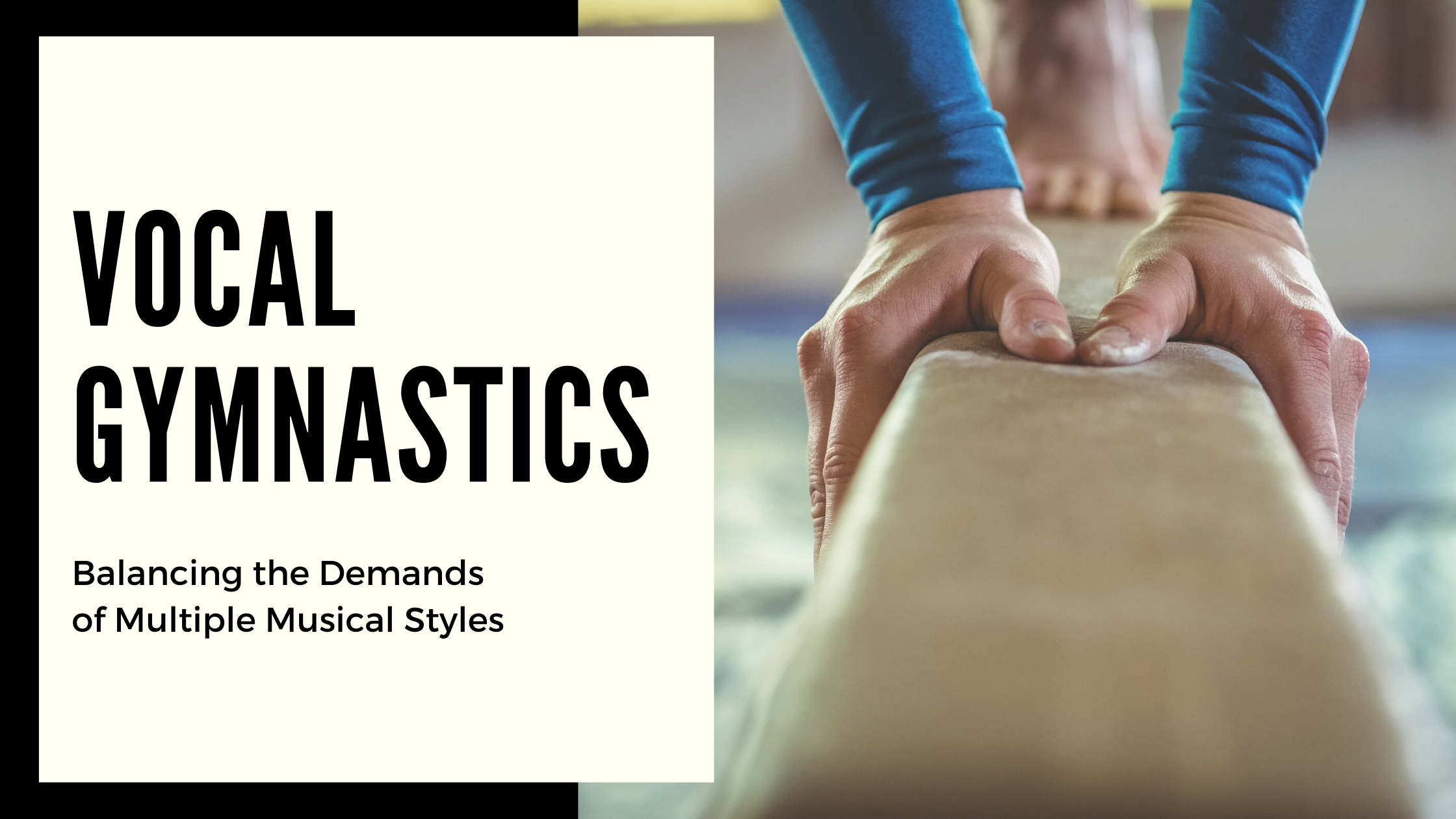While a ballet dancer often trains in modern or hip-hop technique as well, Cross-training is a relatively new phenomena in the study of Singing. Perhaps brought about by the inclusion of more types of music on the Broadway stages starting around the 1980s, professional singers are now more commonly asked to be flexible in moving seamlessly between different styles of music. Even if you’re not aspiring to be a professional Broadway star, there are plenty of benefits to knowing how to switch styles! Perhaps you love singing with a classical chorus, but also want to belt out your favorite Top 40 Hits at Karaoke night. Although you might not have guessed it, cross-training for singers is growing in popularity for vocal health benefits as well! Gone are the days when a one-trick-pony wins the show. So, let’s get with the times and explore this important topic!
Just as dancers and gymnasts have control of their whole body and can switch styles because of their thoroughly integrated muscle coordination, the same can be true for your voice if you train all types of coordination and invest time in getting to know the demands of different musical styles. Your voice is just one mechanism after all, and it only works in one way. Your first goal must always be creating sound efficiently and freely. Start by focusing on getting consistently first vocal fold closure and even air pressure. Depending on the styles you want to sing, you should next focus on gaining control and flexibility in making sounds in specific vocal registers and changing between those different types of sounds seamlessly.
From there, it’s all about creating variation by shaping the area above your vocal folds! We call this area the vocal tract (the entire space from your folds to your lips). If you understand how to manipulate your vocal tract to get the sounds you want, and learn to do it in a comfortable/healthy/safe way under the guidance of a teacher, there is no limit to how many styles of music you can convincingly perform. Again, this means first establishing a reliable baseline technique that includes excellent posture and breathing, as well as the ability to produce sounds in all the different vocal registers (fry, chest, head, falsetto/whistle, and often, combinations thereof). To take your singing beyond your baseline sound, here are some of the main differentiators to listen for among vocal styles:
- Classical: Yawn-like space, generally lower larynx, blended registers, linguistic skills, consistent vibrato
- Country/Folk: Twang, different Breath Needs (often shorter phrases, more common aspirate tones), Conversational Phrasing, sometimes a high mix or belt
- R&B/Pop: Conversational Phrasing, Glottal Scrapes, Aspirate on/offsets, Riffing, sometimes a high mix or belt
- Rock/Metal: Grit, Growling, Screaming (commonly expressed via constriction of the false vocal folds) – huge demands on Breath Support
- Broadway: High Mix or Belt, Bright vowels and more nasality than allowed than other styles, crisp diction, great breath control, ability to maintain control while dancing/acting
- Jazz: Lots of variety in Vocal Textures and Dynamics, sometimes Back-beat or Conversational Phrasing
These are very general ideas to help you get started in building your listening vocabulary! Even if you plan to focus on creating your own music, every singer can learn a lot from covering artists from different styles and time periods– this is a great tool to help you build out your palette of accessible vocal colors you can utilize!
Whether you’re ready to start exploring the nuances of different styles, or you need a little help getting started, Cardon Studios teacher would love to lend a helping hand along the way. Reach out today to schedule your Free Consultation! Let’s get started working toward your goals.

